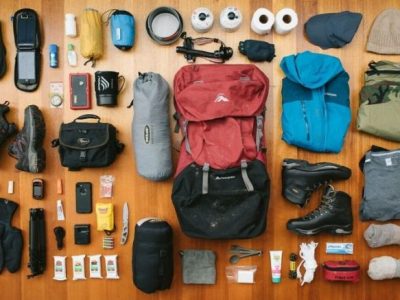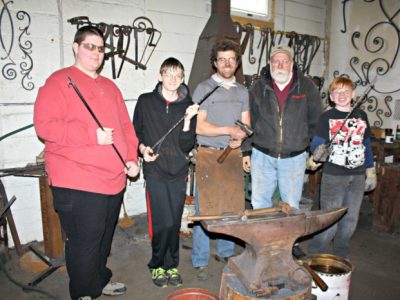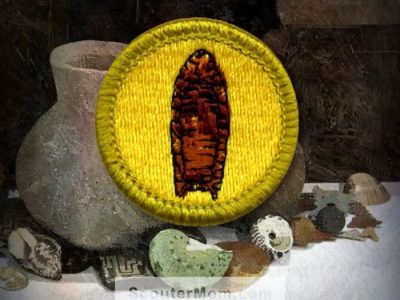Scout troop icebreaker activities play a pivotal role in fostering a welcoming and cohesive environment within the troop. These engaging activities, designed for various age groups and troop sizes, provide a platform for scouts to break the ice, build relationships, and enhance teamwork and communication skills.
Icebreakers come in a myriad of forms, ranging from physical challenges to mental exercises and creative endeavors. Each type offers unique benefits, fostering different aspects of group dynamics and providing opportunities for scouts to showcase their strengths and develop new ones.
Icebreaker Activities for Scout Troops

Icebreaker activities are crucial for fostering teamwork and communication within Scout troops. They create a positive and welcoming atmosphere, encouraging scouts to interact and get to know each other better. These activities are especially beneficial for new troops or those with members joining from different backgrounds.
Types of Icebreaker Activities
There are numerous icebreaker activities suitable for different age groups and troop sizes. Some popular options include:
- Two Truths and a Lie:Scouts share three statements about themselves, with two being true and one being false. Others guess which statement is the lie.
- Name Bingo:Scouts create bingo cards with names of other scouts. They then mingle and try to get signatures from as many people as possible.
- Human Knot:Scouts stand in a circle and randomly grab hands with others. They then work together to untangle the knot without letting go of hands.
- Charades:Scouts take turns acting out words or phrases while others guess.
- Pictionary:Similar to charades, but scouts draw words or phrases on a whiteboard or paper.
These activities help scouts break the ice, develop communication skills, and build camaraderie. They also foster a sense of belonging and create a positive group dynamic.
Types of Icebreaker Activities
Icebreaker activities are designed to help individuals get to know each other in a fun and engaging way. These activities can be organized into three categories: physical, mental, and creative.
Physical icebreaker activities involve movement and interaction, such as games or exercises. They are a great way to get people moving and energized, and they can also help to break down barriers between individuals.
Physical Activities
- Musical chairs:This classic game is a fun way to get people moving and laughing. It is also a good way to teach children about following instructions and taking turns.
- Simon Says:This game is a great way to improve listening skills and coordination. It is also a fun way to get people moving and laughing.
- Two truths and a lie:This game is a great way to get people talking and sharing information about themselves. It is also a good way to practice critical thinking skills.
Mental icebreaker activities involve thinking and problem-solving. They are a great way to get people thinking critically and creatively, and they can also help to improve communication skills.
Mental Activities
- Guess the object:This game is a great way to improve observation skills and problem-solving skills. It is also a fun way to get people talking and sharing information about themselves.
- Pictionary:This game is a great way to improve drawing skills and communication skills. It is also a fun way to get people laughing.
- Charades:This game is a great way to improve acting skills and communication skills. It is also a fun way to get people laughing.
Creative icebreaker activities involve using imagination and creativity. They are a great way to get people thinking outside the box, and they can also help to improve problem-solving skills.
Creative Activities
- Storytelling:This activity is a great way to improve communication skills and creativity. It is also a fun way to get people talking and sharing stories about themselves.
- Improv:This activity is a great way to improve acting skills and communication skills. It is also a fun way to get people laughing.
- Art projects:These projects can be a great way to improve creativity and problem-solving skills. They are also a fun way to get people working together.
When choosing icebreaker activities, it is important to consider the dynamics of the group and the objectives of the activity. Physical activities are a good choice for groups that are looking to get moving and energized, while mental activities are a good choice for groups that are looking to improve their thinking skills.
Creative activities are a good choice for groups that are looking to use their imagination and creativity.
Planning and Preparation
Icebreaker activities are essential for building camaraderie and fostering a positive group dynamic within a Scout troop. Effective planning and preparation are crucial to ensure these activities are successful and engaging.Factors to consider during the planning stage include time constraints, space requirements, and materials needed.
Activities should be tailored to the age and abilities of the Scouts, and should be adaptable to different environments and situations.
Time Constraints, Scout troop icebreaker activities
The duration of icebreaker activities should be appropriate for the age and attention span of the Scouts. Activities that are too short may not provide sufficient time for engagement, while those that are too long may lose the Scouts’ interest.
Space Requirements
The space available for icebreaker activities should be taken into consideration. Activities that require a lot of movement or space may not be suitable for smaller areas, while those that are more sedentary may be more appropriate.
Materials Needed
The materials needed for icebreaker activities should be readily available and easy to use. Activities that require specialized equipment or complex setup may not be practical for impromptu situations.
Adapting Activities
Icebreaker activities can be adapted to suit different environments and situations. For example, activities that require outdoor space can be modified for indoor use by using alternative materials or adjusting the rules. Activities that are designed for a large group can be scaled down for a smaller group, or vice versa.
Facilitating Icebreaker Activities: Scout Troop Icebreaker Activities
Facilitating icebreaker activities is crucial for creating a positive and engaging experience for participants. The facilitator plays a vital role in setting the tone, managing group dynamics, and ensuring everyone feels included and comfortable.
Effective facilitators possess strong communication and interpersonal skills, are organized and adaptable, and are passionate about creating a welcoming and inclusive environment.
Creating a Safe and Enjoyable Experience
- Establish clear guidelines:Explain the purpose and rules of the icebreaker, including any time limits or expectations for participation.
- Set a positive and respectful tone:Model respectful behavior, encourage active listening, and discourage any form of bullying or harassment.
- Provide clear instructions:Give participants precise instructions on how to participate in the activity, ensuring everyone understands what is expected of them.
- Foster a sense of belonging:Use inclusive language, encourage participants to share their perspectives, and make everyone feel valued and respected.
Assessing the Effectiveness of Icebreaker Activities
Assessing the effectiveness of icebreaker activities is crucial for evaluating their impact on troop dynamics and making necessary adjustments to improve their quality. Several methods can be employed to evaluate the effectiveness of icebreaker activities.
Metrics for measuring engagement and participation include:
- Number of participants actively involved in the activity
- Duration of participation
- Level of enthusiasm and energy displayed by participants
Metrics for measuring overall impact on troop dynamics include:
- Improved communication and interaction among troop members
- Increased sense of camaraderie and belonging
- Enhanced problem-solving and teamwork skills
By gathering feedback from participants, facilitators can gain insights into the strengths and weaknesses of the activities. This feedback can be collected through surveys, questionnaires, or informal discussions.
Based on the assessment findings, facilitators can make adjustments to improve the quality and effectiveness of future icebreaker activities. These adjustments may include:
- Modifying the activity format or duration
- Incorporating different types of activities to cater to diverse learning styles
- Providing more guidance or support to participants
By continuously evaluating and refining icebreaker activities, facilitators can ensure they effectively meet the needs of the troop and contribute to positive troop dynamics.
Last Word
Planning and facilitating icebreaker activities effectively requires careful consideration of factors such as time constraints, space requirements, and the dynamics of the troop. By creating a safe and enjoyable atmosphere, encouraging participation, and adapting activities to suit the group’s needs, leaders can maximize the impact of icebreakers and foster a positive and inclusive troop culture.
Frequently Asked Questions
Why are icebreaker activities important for scout troops?
Icebreaker activities help scouts get to know each other, build trust, and develop communication and teamwork skills.
What are some different types of icebreaker activities?
Icebreaker activities can be physical, mental, or creative, and can include games, discussions, or challenges.
How can I choose the right icebreaker activity for my troop?
Consider the age group, size, and dynamics of your troop when choosing an icebreaker activity.



